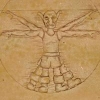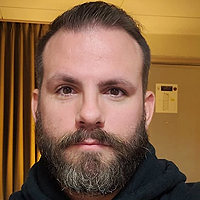1. Do you have to create models true to the real size of what your making? If yes how can you see the size of the model, so if i make for example a man how can i be sure when i put it in unity he wont look like a giant and will be an average sized man?
The major issue with size of game models is, that the perception of a model in games differs to the perception of objects in the real world. For one the brain does not measure object size by meter, but it tries to evaluate the size by comparing it to other objects. So, e.g. a giant looks like a giant if it is towering over a tree, but it looks like a normal human in a white room. This goes as far as that the relation of head and shoulders of a human gives enough information about the size of the human. The brain has learned, that a child (small) has a large head on small shoulders, a grown man has much broader shoulders (tall). E.g. a reason why many giants have over proportional shoulders compared to the tiny head, just to increase the illusion of tallness.
So, with this in mind you need to put your objects in your game world only in relation, not in absolute size. Most games start with a standard game character and measure everything else to this game character. E.g. a house should be 3-game character high etc. The next thing is, that location are often much smaller than in reality (you don't want to walk half an hour to the next save point), the are just build to give the illusion of being bigger. On the other hand, smaller objects are often larger than in real live, just to give them more importance and to identify them at larger distances.
2. Should you delete the tris that arnt seen on the model? So for example i created a man then i put a jacket and bottoms on it, should i delete the tris that the jacket and bottoms are covering on the model?
A rule of thumb is:
If the jacket is fix, that is, that most characters are not really customizable, then you should remove the tris. Not only for performance, but although to avoid other artifacts (eg. body penetration when animating the model). Most games avoid separate models, only games which have a very high level of customizable characters (e.g. RPG, Oblivion) will use it.
4. Is there a copyright on selling models like a ford focus car or a colt m1911 sidearm?
Design is copyrighted and there are most likely trademarks on the brands.
![]()











